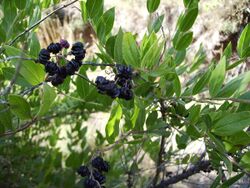| Display title | Biology:Coriaria myrtifolia |
| Default sort key | Coriaria myrtifolia |
| Page length (in bytes) | 9,931 |
| Namespace ID | 3026 |
| Namespace | Biology |
| Page ID | 299095 |
| Page content language | en - English |
| Page content model | wikitext |
| Indexing by robots | Allowed |
| Number of redirects to this page | 0 |
| Counted as a content page | Yes |
| Page image |  |
| HandWiki item ID | None |
| Edit | Allow all users (infinite) |
| Move | Allow all users (infinite) |
| Page creator | imported>John Stpola |
| Date of page creation | 17:49, 10 February 2024 |
| Latest editor | imported>John Stpola |
| Date of latest edit | 17:49, 10 February 2024 |
| Total number of edits | 1 |
| Recent number of edits (within past 90 days) | 0 |
| Recent number of distinct authors | 0 |
Description | Content |
Article description: (description)
This attribute controls the content of the description and og:description elements. | Coriaria myrtifolia, called in English redoul, is a shrub that grows to 2–3 m tall. Myrtifolia means myrtle-like leaves.
The fruit is a fleshy black berry achene slightly similar to a blackberry but toxic. Coriaria myrtifolia has the largest fruits in the genus Coriaria. It is especially dangerous for... |

